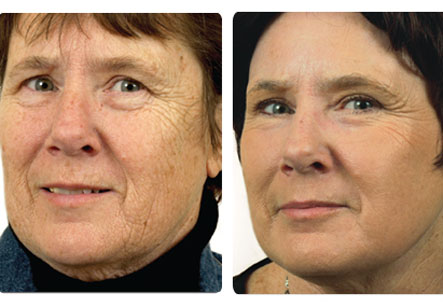Skin Resurfacing
Introduction
Skin resurfacing is a treatment in cosmetic surgery to improve the texture, clarity and overall appearance of the skin. Aging, injury, sun exposure, heredity and lifestyle factors including nutrition, alcohol consumption and smoking can cause facial skin damage.
It is commonly used in various problems of facial skin. The expectations about the results must be realistic and discussion with surgeon is very essential.
Treatable Conditions by skin resurfacing:
1. Fine wrinkles on face
2. Sun damaged facial skin
3. Crow’s feet around the eyes
We have all the information you need about public and private Cosmetic / Plastic clinics that provide Laser Skin Resurfacing in Iran, Islamic Republic Of

4. Skin laxity in lower eyelid area
5. Brown spots or blotchy skin coloring
6. Precancerous skin conditions
7. Acne or chicken pox scars
8. Superficial injury scars on face
9. Pigmentation changes like freckles, melisma and pregnancy mask
10. Loose skin and cellulite
The risks and steps of the procedure should be discussed with the surgeon prior to it. The surgeon decides as to which lift procedure is suitable for goals of the patient. Success of the lift depends on skill of surgeon, patient factors and ability of surgeon to foresee the possible results.
This procedure can also be combined with other cosmetic surgeries such as a facelift or eyelid surgery.
Evaluation before skin resurfacing includes questions or examinations regarding:
1. The skin type
2. Severity of sun damage
3. Extent of uneven pigmentation
4. Depth of the skin problem.
5. Previous medical history, drug allergies, any known disease and medications being taken for them as well as previous surgeries
6. Prior treatments on face
7. Prior use of retinoid products.
Skin Resurfacing Techniques
1. Chemical Peel- in this method, various chemicals are used to treat the skin. These include glycolic acid, trichloroacetic acid and phenol. These are caustic solutions and may cause superficial or deep peeling or resurfacing.
2. Dermabrasion- in this method, a small, rapidly spinning wheel with a roughened surface is used abrade the skin, removing its upper layers. This injury heals and produces resurfacing.
3. Laser resurfacing- this is resurfacing by use light energy. There are two forms of laser resurfacing. The first type creates a uniform injury to the skin, similar to dermabrasion and in the second type; the laser creates tiny holes in the deeper layers of skin known as fractional resurfacing.
Some common risks are:
1. Exacerbation of cold sores or fever blisters can occur in a predisposed patient.
2. Allergic reactions
3. Skin eruptions
4. Temporary skin irritation
5. Small whiteheads can develop on the skin
6. Raised or thickened scar which may be temporary or permanent
7. Pigmentation changes like blotchiness
Preparation for skin resurfacing:
1. Prior to skin resurfacing, a course of certain oral medications may be advised by the surgeon.
2. Before chemical or laser resurfacing, the plastic surgeon may place prescribe special creams, lotions or gels to apply on the skin for a few weeks or longer
3. Skin resurfacing treatment can be performed in plastic surgeon’s office or a hospital. Home assistance by a relative or a friend is required for a couple of days following the procedure. This should be taken care of.
4. These procedures are usually done under local anesthesia alone or combined with intravenous sedation. Sometimes, general anesthesia may be needed.
After the procedure:
Usually, the resurfaced skin is covered with petroleum jelly or other protective ointment containing gauze pads. In some cases, dressings, tape or a bandage may be applied to the areas.
Recovery and after care:
1. Some swelling and redness is common following any method of resurfacing. A scab may or may not form over the treated area.
2. The skin should be cleansed properly after application of any ointment.
3. Shaving should be avoided in case of male patients.
4. After about seven to ten days after the skin resurfacing procedure, a new skin begins to form at the site of treatment. The skin may be pink for several weeks to months.
5. Camouflage makeup usually can be used after a couple of weeks as per the surgeon’s advice.
Results:
The final result of the procedure may even require a year for full appearance. Most patients feel that the results are definitely worth waiting for.
However, the ageing of skin continues to occur. Also the type of wrinkles caused by movement of the facial muscles eventually reappears. Despite this, there is improvement in skin quality and texture by resurfacing. These techniques make the person look younger and fresher for many years and build up the self-confidence.